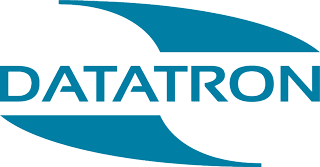HR compliance: How to maintain HR records and meet industry standards
HR departments are responsible for some of the most sensitive information a company maintains. Most of it is subject to shifting legislation.
CIPD’s legislation updates page features no less than 35 separate entries for 2022 alone. Amongst those changes were significant adjustments to data protection and reporting requirements.
Manually maintaining accurate and compliant records is a full-time job. And there are severe penalties for noncompliance. It’s daunting, but it doesn’t have to be a challenge.
Here’s how digitisation and automation can shoulder the HR compliance burden.
The challenges of maintaining accurate HR records
Human error and process variation
With HR records subject to GDPR protection, insecure data presents a major risk to compliance. The leading cause of leaks? Human error, which is behind 82 percent of data breaches.
It’s not only weak passwords that undermine security, though. Process variation occurs when data management methods vary between HR professionals. It can result in long-term knowledge gaps and decentralised document storage.
Add a variety of document types to the mix, and things become even more complex. Each will have different records with varying retention periods.
Decentralised storage
Decentralised records present an unnecessary compliance challenge due to:
- process variation
- a combination of digital and physical storage
- un-integrated retention software.
In the case of paper records, it’s both risky and inefficient. As soon as regulations change, HR managers will need to source and update each document.
Without standardised processes, it’s far easier to lose track of records. That in turn makes it difficult for HR managers to retain, update, recall and destroy them at the appropriate moments.
Heavily regulated industries
Industry-specific regulations are often more comprehensive, with severe penalties for non-compliance. That's especially true in sectors like healthcare, finance and government. Extra requirements exacerbate the challenges mentioned above.
Despite the added complexity, organisations like the ICO are not sympathetic about non-compliance. If a healthcare organisation is in breach of the 2018 Data Protection Act or the Common Law Duty of Confidentiality, fines can run to £17 million.
Safeguarding HR compliance with automation
Human resources information systems (HRISs) directly address those challenges. They do so by providing a secure centralised database and automated record management
Centralising record-keeping
By some counts, the average organisation uses upwards of 100 software platforms. When it comes to record-keeping, the closer that number is to one, the better.
A comprehensive HRIS keeps paper-trails as simple as possible by containing records on a single database. When the time comes for a compliance audit or access requests from employees, locating documents is far easier. That's especially true if your HRIS uses strict naming conventions that are easily searchable.
It will also keep records secure. Managing access on one digital platform is far simpler than tracking access across an entire technology stack, or a raft of paper documents.
Standardising documentation
Using a single source of truth for HR records limits the impact of process variation. Create templates for the most used record types. You’ll guarantee that they’re always completed using the same, standardised format.
It’s a far more efficient way to create compliant records. Instead of creating documents on an ad-hoc basis, HR managers can use templates to expedite processes like on- and off-boarding. They also ensure you’re compliant with the requirements for each type of employee.
Automating record management
Depending on the kind of information you’re collecting, retention periods will differ. By creating workflows for each document category, you can automate reminders when the retention period is up. That way, you (and your team) don’t have to actively track record status on a rolling basis. Set the appropriate timings, and compliance will maintain itself.
A sophisticated HRIS will evolve alongside regulations. At the very least, it will allow you to adjust automation parameters as compliance changes.
Automated HR compliance in practice
We’ve seen how automation can expedite compliant record-keeping first hand. The Northumbria NHS Trust — one of the UK’s largest — approached us with a mountain of physical records. In response, we built a tailored digital alternative.
Our team designed a bespoke HRIS to cover 18,000 staff members spread across 5,000 square kilometres. We digitised over 375,000 physical documents in the process. Our engineers also developed access management features with compliance in mind.
The trust now benefits from centralised records that are compliant by default. It's a significant improvement over physical documents spread across Northumbria.
Line managers can only access information about their direct reports, and HR staff no longer have to keep track of thousands of records. The custom HRIS now automatically retains and destroys records according to regulatory requirements.
The right HRIS can navigate the requirements of heavily regulated industries, and it can do so at scale. HR departments can shed the compliance burden without shirking compliance responsibility. Automation ensures you keep records accurately and appropriately from the outset.

